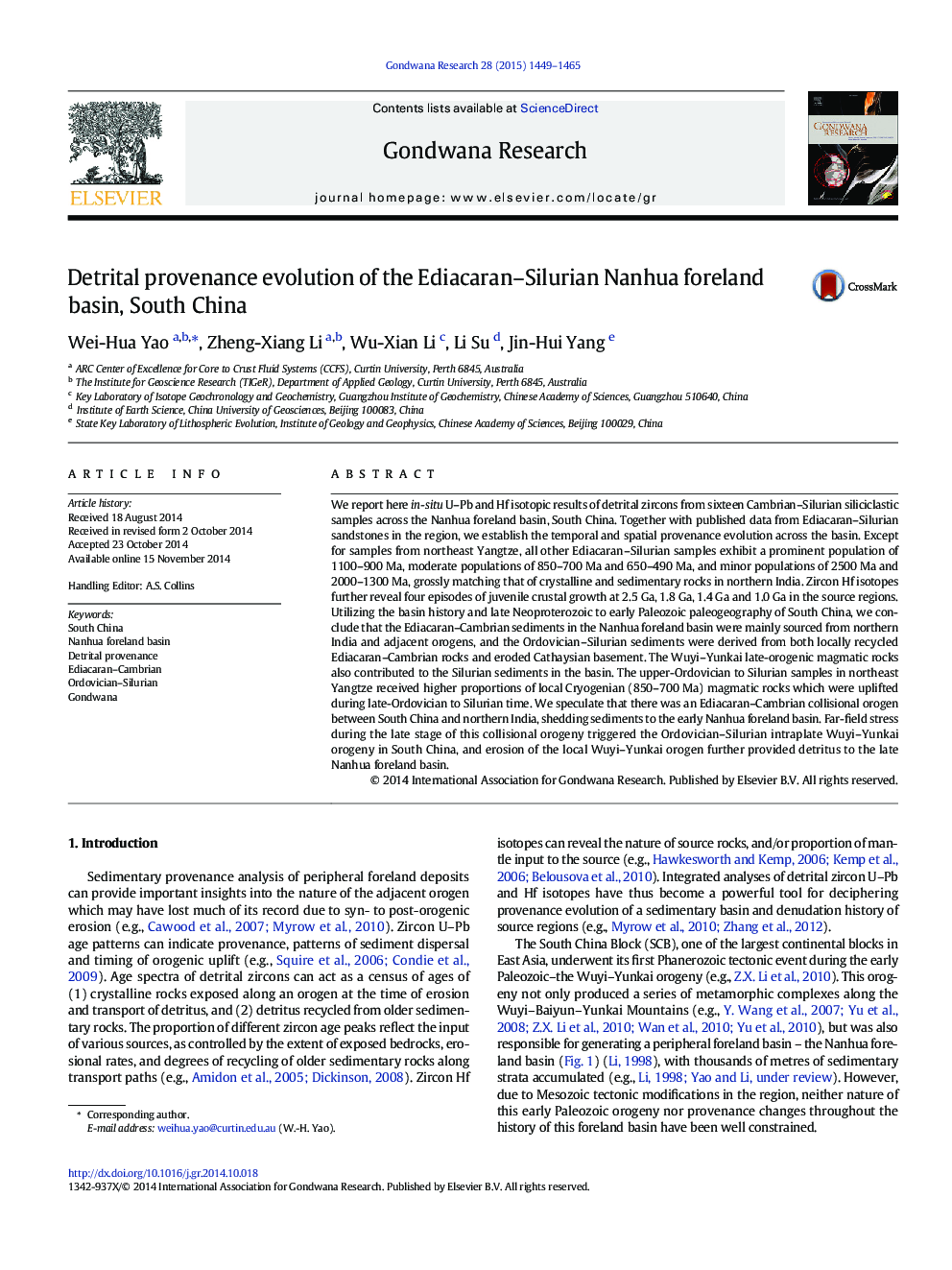| کد مقاله | کد نشریه | سال انتشار | مقاله انگلیسی | نسخه تمام متن |
|---|---|---|---|---|
| 4726701 | 1356343 | 2015 | 17 صفحه PDF | دانلود رایگان |

• The Nanhua foreland basin in South China involved a two-stage provenance evolution.
• The Ediacaran–Cambrian sediments were externally derived from northern Gondwana.
• The Ordovician–Silurian sediments were internally derived from South China.
• The provenance evolution was linked to two successive orogenies affecting South China.
We report here in-situ U–Pb and Hf isotopic results of detrital zircons from sixteen Cambrian–Silurian siliciclastic samples across the Nanhua foreland basin, South China. Together with published data from Ediacaran–Silurian sandstones in the region, we establish the temporal and spatial provenance evolution across the basin. Except for samples from northeast Yangtze, all other Ediacaran–Silurian samples exhibit a prominent population of 1100–900 Ma, moderate populations of 850–700 Ma and 650–490 Ma, and minor populations of 2500 Ma and 2000–1300 Ma, grossly matching that of crystalline and sedimentary rocks in northern India. Zircon Hf isotopes further reveal four episodes of juvenile crustal growth at 2.5 Ga, 1.8 Ga, 1.4 Ga and 1.0 Ga in the source regions. Utilizing the basin history and late Neoproterozoic to early Paleozoic paleogeography of South China, we conclude that the Ediacaran–Cambrian sediments in the Nanhua foreland basin were mainly sourced from northern India and adjacent orogens, and the Ordovician–Silurian sediments were derived from both locally recycled Ediacaran–Cambrian rocks and eroded Cathaysian basement. The Wuyi–Yunkai late-orogenic magmatic rocks also contributed to the Silurian sediments in the basin. The upper-Ordovician to Silurian samples in northeast Yangtze received higher proportions of local Cryogenian (850–700 Ma) magmatic rocks which were uplifted during late-Ordovician to Silurian time. We speculate that there was an Ediacaran–Cambrian collisional orogen between South China and northern India, shedding sediments to the early Nanhua foreland basin. Far-field stress during the late stage of this collisional orogeny triggered the Ordovician–Silurian intraplate Wuyi–Yunkai orogeny in South China, and erosion of the local Wuyi–Yunkai orogen further provided detritus to the late Nanhua foreland basin.
Figure optionsDownload as PowerPoint slide
Journal: Gondwana Research - Volume 28, Issue 4, December 2015, Pages 1449–1465